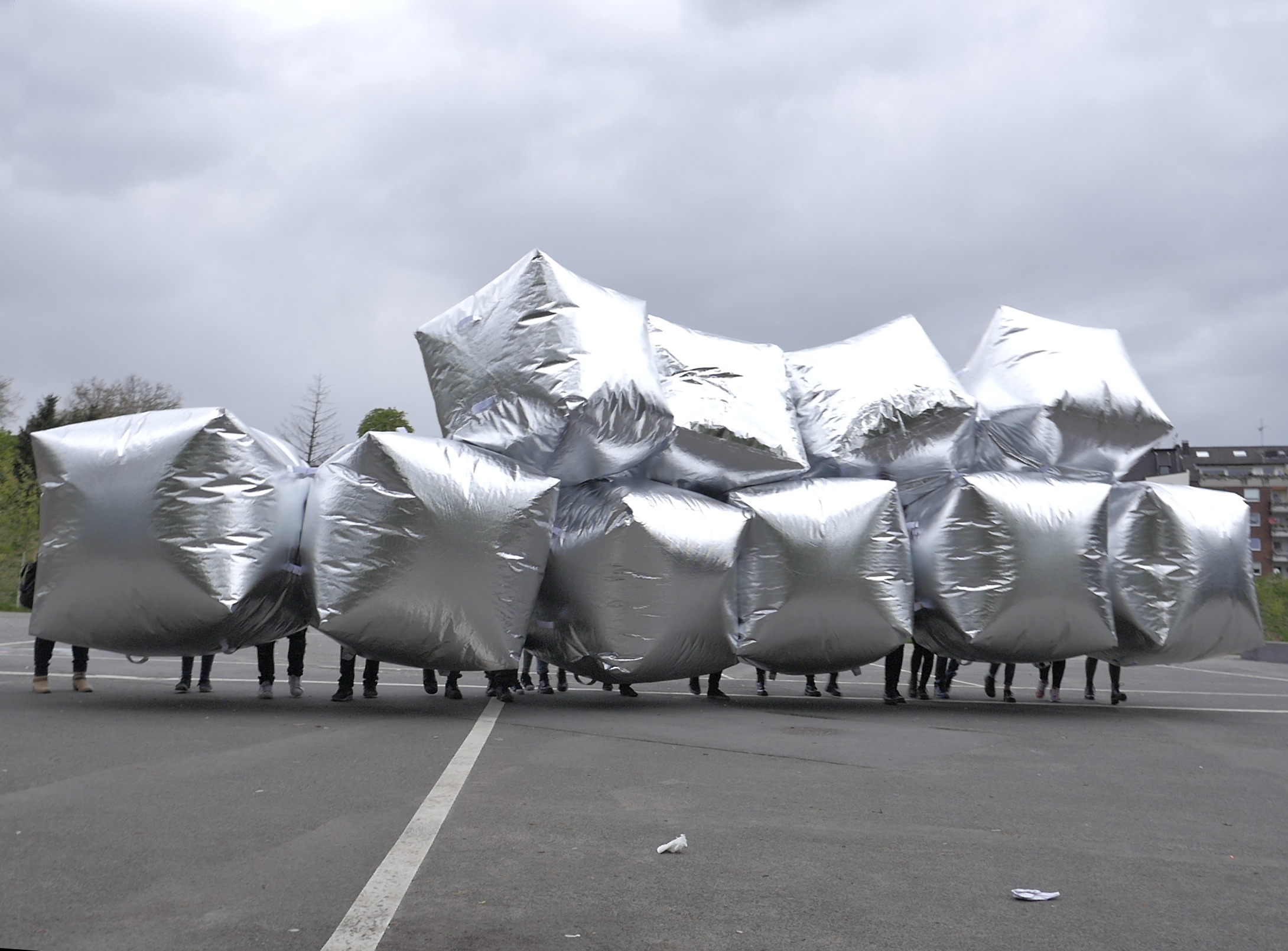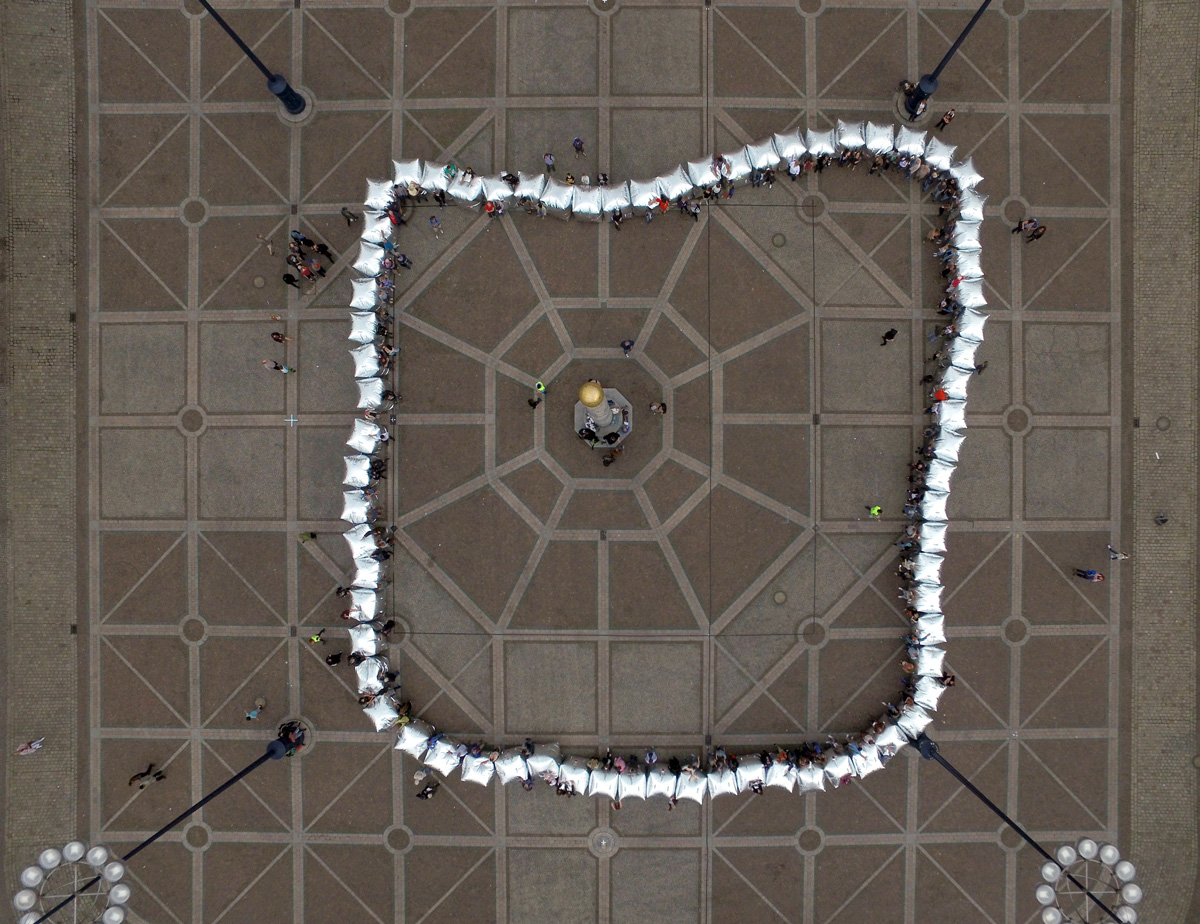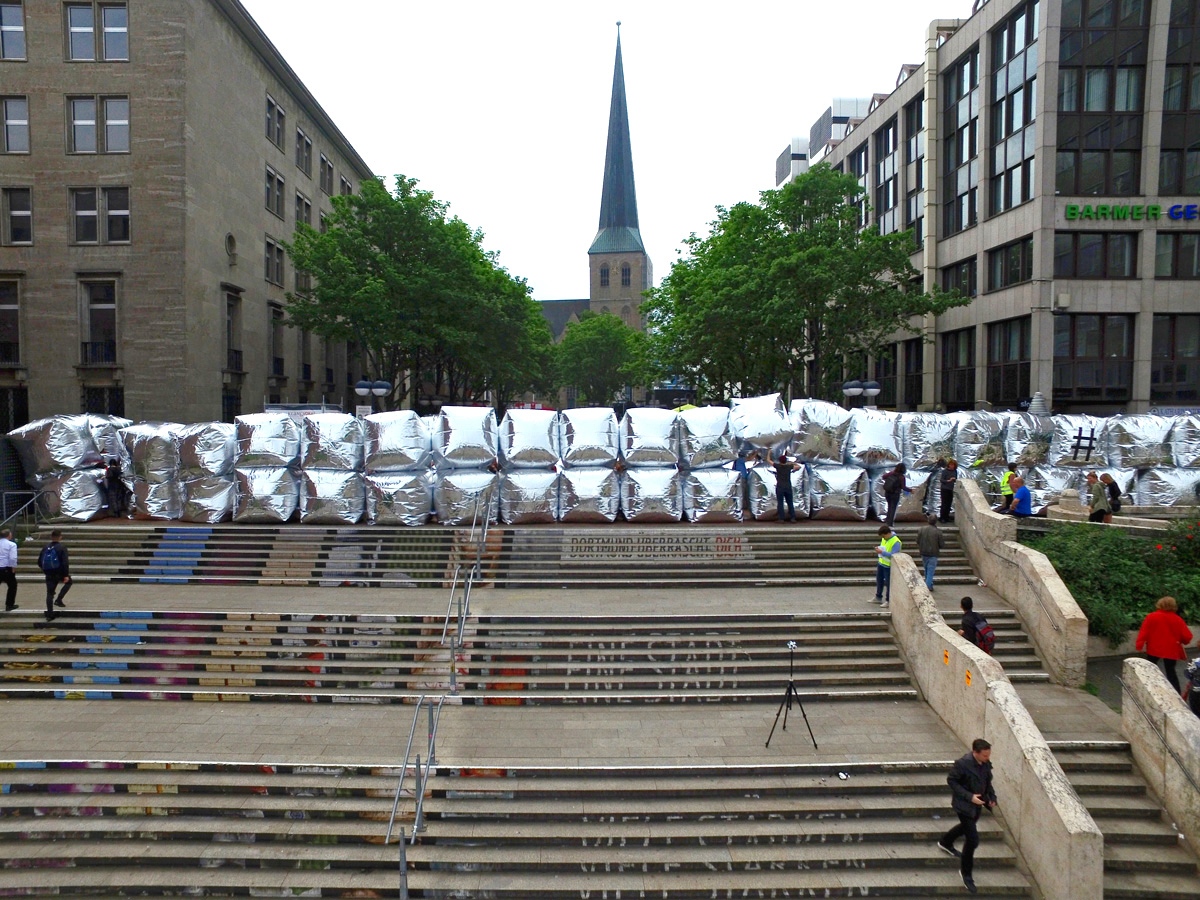Dortmund, Germany, 2016
Coordinated with the Schauspiel Dortmund Theater
and Schools without Racism – Schools with Courage
The Mirror Barricade (Die Spiegel Barrikade) is a social sculpture consisting of silver reflective inflatable cubes that can be assembled within seconds into a barricade. The playful tools were built by citizens of Dortmund, who positioned themselves against xenophobia and the so-called “Day of German Future”, a neo-Nazi rally on the 4th of June 2016. The barricade was designed to enable Dortmunders to literally held up a mirror to the extreme-right marchers and make space for reflecting on the kind of society we want to live in.
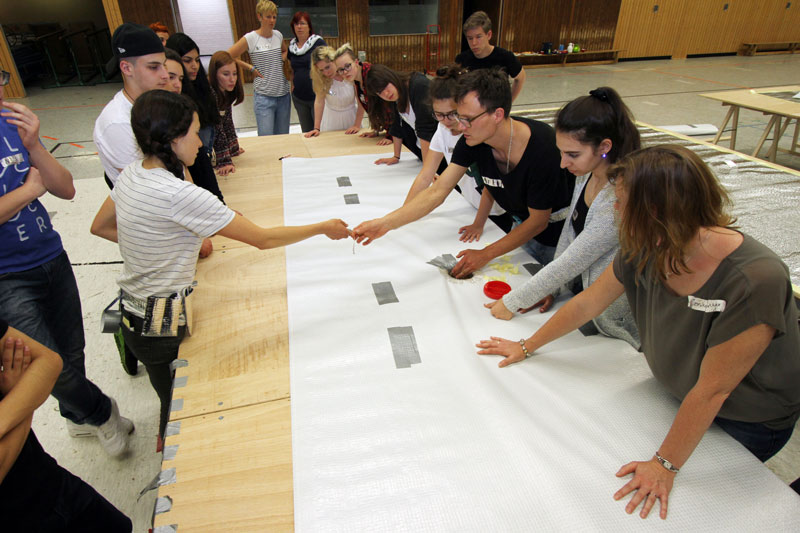
The School Workshops
Every cube was made by a citizen of Dortmund during a public workshop. The main focus was to work with students at 14 local schools that were part of the network Schools without Racism — Schools with Courage. During daylong skillshare workshops, students worked together in teams to construct inflatable cubes and also took part in discussions about xenophobia.
The whole day was designed to encourage team building. From the very beginning when a truck of supplies from the theatre would arrive, all of the students, teachers and artists from Tools for Action would unload the truck together. We would begin by setting up six custom tables in the school gymnasium or the aula assembly hall, transforming it into a convivial factory for building barricades of the 21st century. The goal was to create a supportive, open and fun environment where students could feel safe to talk about issues of racism and discrimination. By building the cubes together, students built friendships for supporting each other to be courageous and take action to stand up for multiculturalism and inclusion.
Pupils of the Bert-Brecht Gymnasium do an action training with their self-made inflatable barricade. Foto Peter Bandermann
As a preamble to the fabrication workshop, students would first engage in a discussion about racism and xenophobia, convened by the local organization Respekt Buro. The discussion exercises were designed to bring to the surface the influence of neo-Nazi ideology on traditional German values. It also created space for students to talk about the internationally interconnected neo-Nazi scene in Dortmund, which focuses much of its recruitment on students just out of high school.
After the discussion and presentation about inflatables by Tools for Action, the fabrication workshop began. The entire class would gather together to watch a step by step of demonstration of how to measure and cut the pattern for the inflatable cube. Then the students would form into teams, each locating themselves at one table and using custom-crafted tools to make their cube pattern. The rest of the day would be an ebb and flow of the group coming together to watch a demonstration for the next step, then returning to their team’s table to work together on that step.
One by one the teams would finish their cubes and inflate them. As the silver forms would fill with air, so too would the hall fill with excitement and laughter. Students would bounce the inflatables high into the air in celebratio
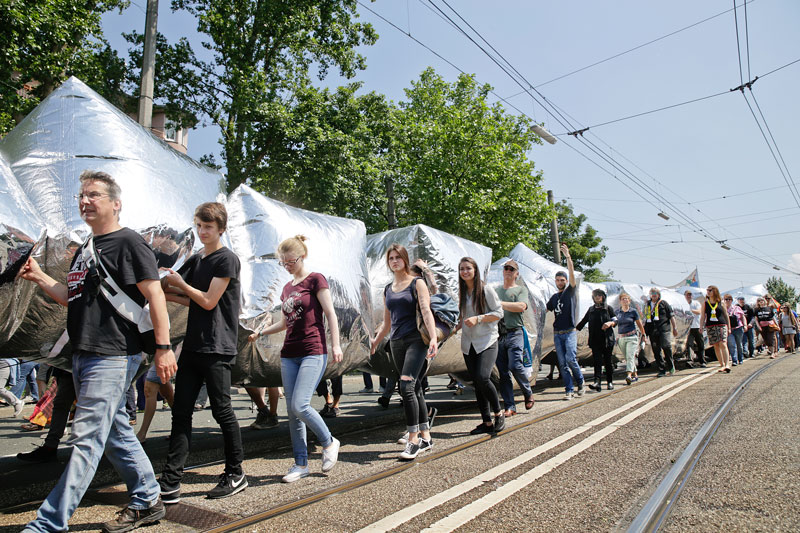
n and then assemble all the cubes together to learn a series of choreographies dubbed the Barricade Ballet. These choreographies doubled as an action training in ways these playful tools could be used to intervene in the neo-Nazi march. “Double spaghetti” and “Pumpkin” where among the favorite code words for intervening with these inflatable sculptures as an artistic form of direct action.
The international network Schools without Racism, Schools with Courage (Schule ohne Rassismus – Schule mit Courage) began in Germany in 1995 during a period of increasing racist and extreme right-wing violence. This was the motivation to create a network in which young people have the opportunity take a stand against daily discrimination in their living environment. In this framework students can ask, “What kind of society do I want to live in?” and actively contribute to building a society where respect and multiculturalism are at its core.
The Action
On June 4th, when more than 500 neo-Nazis gathered in Dortmund, counter-demonstrators connected the cubes together to form a barricade, to literally hold up a mirror to the extreme-right marchers. The Mirror Barricade also protected counter demonstrators by functioning as a shield against neo-Nazi violence and police repression.
The inflatable barricades were located at two gathering points in the city: a playful, family-friendly demonstration at Wilhelmsplatz (the square in the district Dorstfeld, what the self-proclaimed neo-Nazis call their “national liberated zone”) and the barricade at BlockaDO, the more radical demonstration that promoted civil disobedience for blockading the neo-Nazi march. The BlockaDO demonstration was kettled in immediately by police, who had formed a cordon around the neo-Nazi march. The cubes became cushions and a protection barrier between impassioned protesters and police forces. The police response was to cut the inflatable works into pieces. Here the question arises about how to deal with neo-Nazi marches and which values are defended in our society.
The Barricade of the 21st Century
Blown up within minutes from a formless piece of plastic, the inflatables are huge props for visibility. Stretching across roads and intersections, their glittering metallic surfaces and surreal weightless forms captivate the eyes of the public and media. They are more than just walls, though — when the cubes are thrown into the air, the street is transformed into a spontaneous playground. In the battle of the spectacle, the Mirror Barricade is a tactical tool for saying NO to xenophobia and racism, and YES to imagining what else might be possible.
The Mirror Barricade created an unpredictable, stunning, aesthetic image of togetherness in Dortmund — standing in solidarity against xenophobia and exclusion whilst in solidarity with refugees and inclusion.
Quality sites
- Casinos Not On Gamstop
- UK Online Casinos Not On Gamstop
- Nuovi Casino Online Italia
- UK Casinos Not On Gamstop
- Casino Not On Gamstop
- Casinos Not On Gamstop
- Casino Sites Not On Gamstop
- Casino Italiani Non Aams
- Online Casino
- Non Gamstop Casino UK
- Casino En Ligne Fiable
- Best Non Gamstop Casinos
- Best Non Gamstop Casinos
- Casino Not On Gamstop
- Siti Casino Online Non Aams
- Casino Non AAMS
- UK Casinos Not On Gamstop
- Meilleur Casino En Ligne
- Slots Not On Gamstop
- Casino Sites Not On Gamstop
- Betting Sites
- UK Casino Not On Gamstop
- Meilleur Casino En Ligne
- Lista Casino Online Non Aams
- Casino Crypto En Ligne
